In the world of academia, graduation day is a momentous occasion, a culmination of years of hard work and dedication. It’s a day when graduates proudly don their caps and gowns, adorned with symbols of their achievements. But what if you could infuse this cherished tradition with the rich cultural heritage of Native American beadwork?
Join Native American Clothes on a journey to explore the mesmerizing world of the new Native American beaded graduation cap, where tradition meets innovation, and every bead tells a story. In this article The New Native American Beaded Graduation Cap, we’ll delve into the intricate artistry, cultural significance, and the profound impact of these beautifully adorned caps on the graduates who wear them.
Why do graduates wear a mortar board?
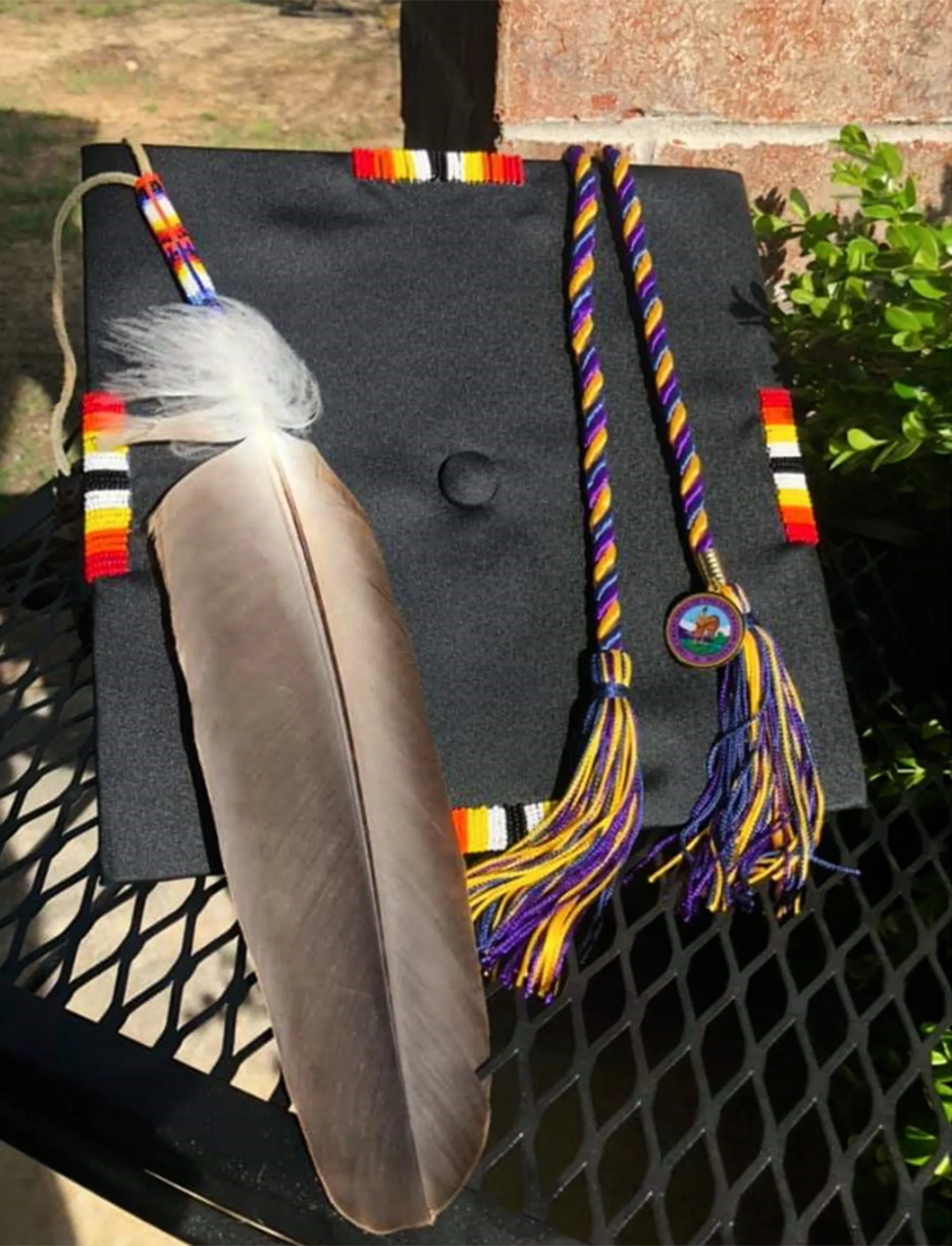
When we think of graduation ceremonies, images of proud graduates in cap and gown immediately come to mind. These iconic symbols of academic achievement have a rich history that dates back centuries. Join us on a journey through time as we explore the fascinating evolution of graduation caps and gowns, from their humble beginnings to the modern attire worn by graduates worldwide.
Origins of Academic Attire
The tradition of wearing academic attire can be traced back to the 12th and 13th centuries when universities formalized their academic curriculum. During this period, many professors were priests or monks who wore clerical robes while teaching.
These robes became the foundation for the graduation regalia we know today. So, every time you don your graduation gown, you’re not just celebrating your achievement; you’re also paying homage to centuries of scholarly tradition.
The Evolution of the Mortarboard
One of the most recognizable elements of graduation attire is the mortarboard cap. Its origins can be traced to the 15th century, evolving from a hat style known as a biretta, commonly worn by Catholic clerics and professors.
The distinctive square shape of the mortarboard is believed to symbolize a book, signifying scholarly accomplishments. Interestingly, the name “mortarboard” is derived from the flat board used by bricklayers to lay mortar, emphasizing the notion of skilled craftsmanship.
The Addition of Hoods
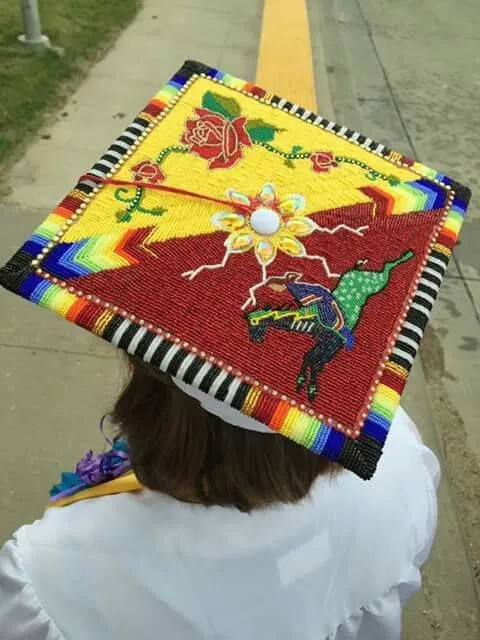
In the 18th century, hoods were introduced as a complement to the capes and gowns worn by academics. These hoods served dual purposes: they symbolized higher intelligence and superiority while also providing added warmth. Today, hoods remain a vibrant and meaningful component of graduation attire, representing a graduate’s field of study and level of academic achievement.
The Transition to Modern Gowns
Originally, graduation gowns were grey in color. However, over time, they transitioned to the predominantly black attire we see today. In some cases, gowns may feature colors specific to an academic institution or chosen to denote a particular level of achievement.
Interestingly, it was after the Civil War that it was decided that academic regalia should be reserved exclusively for graduation ceremonies, further enhancing its symbolism as a marker of recognition and accomplishment.
As you prepare to don your graduation cap and gown, remember that you are not just participating in a personal milestone but also becoming a part of a timeless tradition that spans centuries. So, walk across that stage with your head held high, knowing that you are carrying forward a legacy of academic excellence and achievement.
How do you bead a graduation cap?
Beading a graduation cap is a creative way to personalize your cap and make it stand out during your graduation ceremony. Here’s a step-by-step guide on how to bead a graduation cap:
Materials You’ll Need:
- Graduation Cap: Start with a plain graduation cap in the color of your choice.
- Beads: Select beads of various sizes, shapes, and colors to create your desired design. Be sure to choose beads with holes large enough to accommodate the thread or string you plan to use.
- Needle and Thread: Use a beading needle or any fine needle with a thin, sturdy thread or fishing line. Make sure the thread is long enough to complete your design.
- Adhesive: You may need a strong adhesive to secure the beads to the cap, especially if they are heavy or if you want to ensure they stay in place.
Steps to Bead Your Graduation Cap:
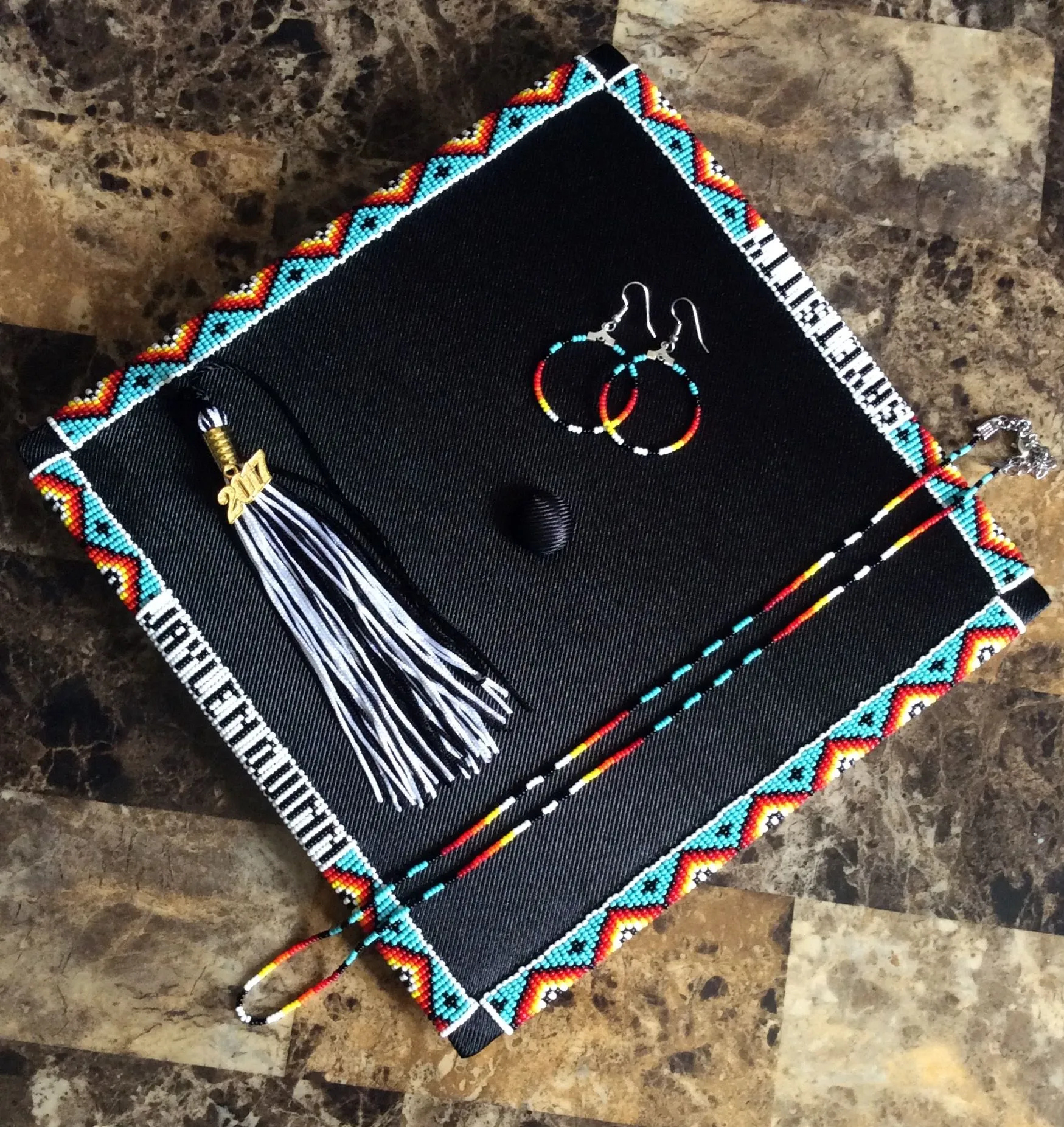
- Plan Your Design: Before you start beading, plan your design on paper or sketch it directly onto the cap. This will give you a clear idea of how you want your cap to look.
- Thread the Needle: Thread your needle with a length of thread. Double up the thread for extra strength, and tie a knot at the end to prevent it from slipping through the beads.
- Start Beading: Begin beading your cap according to your design. Insert the needle from the underside of the cap to the top, bringing it through the center of the first bead.
- Secure the Bead: If your beads have large holes, you may need to secure the first bead by tying a knot at the base or using a small amount of adhesive to keep it in place.
- Continue Beading: Add beads one by one, following your design. Thread the needle through each bead, and pull it snugly to keep the beads in place.
- Secure Regularly: Periodically, tie knots at the back of the cap to secure your beading work. This ensures that if the thread breaks, you won’t lose all your beads.
- Add Variety: Experiment with different bead sizes, colors, and patterns to create a unique design. You can also mix in sequins or charms for extra flair.
- Finishing Touches: Once you’ve completed your design, tie a final knot and trim any excess thread. If you’ve used adhesive, allow it to dry completely before wearing the cap.
- Let It Set: Let your beaded graduation cap sit undisturbed for a few hours or overnight to ensure all the beads and adhesive have properly set.
- Wear with Pride: On your graduation day, proudly wear your beautifully beaded cap as you celebrate your achievements.
Remember that beading a graduation cap is a creative process, so feel free to let your imagination run wild. Whether you choose to create intricate patterns or simply add a touch of sparkle, your beaded cap will make a memorable statement on your special day.
What does a graduation cap symbolize?
The Rich Tradition of Academic Regalia: From Monastic Roots to Modern Elegance
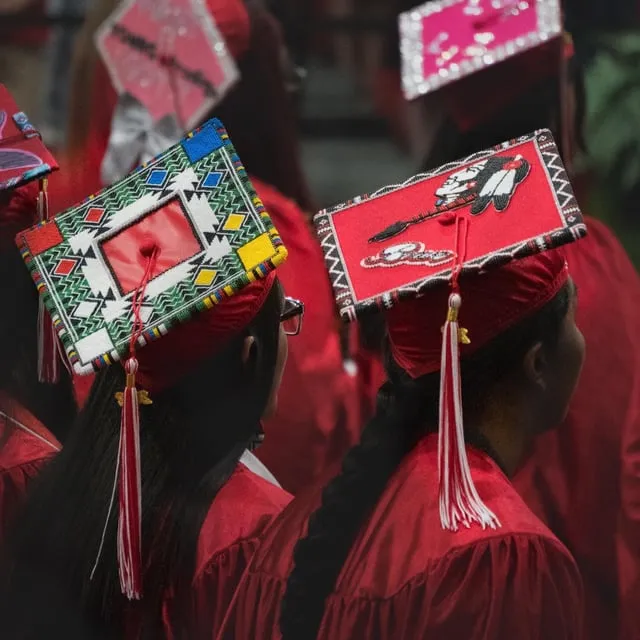
Academic regalia, with its distinctive caps, gowns, and hoods, is an integral part of the pomp and circumstance of graduation ceremonies worldwide. But have you ever wondered about the origins and significance of these ceremonial garments? Join us on a journey through time as we unravel the rich history of academic regalia.
A Glimpse into the Past: Medieval Origins
The most striking aspect of graduation ceremonies, the academic regalia, has its roots firmly planted in the hallowed halls of medieval European universities. Think back to the Middle Ages, where the likes of Oxford and Cambridge were taking their initial form.
Scholars of this era were often clergy members, and their attire mirrored the vestments of their monastic orders. This clothing served a practical purpose as well, as university buildings of the time were notorious for being cold and drafty.
From Clerical Attire to Academic Dress
As education gradually transitioned away from ecclesiastical control, academic attire evolved. There was a profusion of styles, colors, and designs for caps, gowns, and hoods across different institutions. It was a time of diversity in the world of academic fashion.
The custom of wearing academic dress made its way across the Atlantic to colonial America, but it wasn’t until 1895 that a standardized code of academic dress took hold in the United States.
Degrees of Distinction: Gowns and Hoods
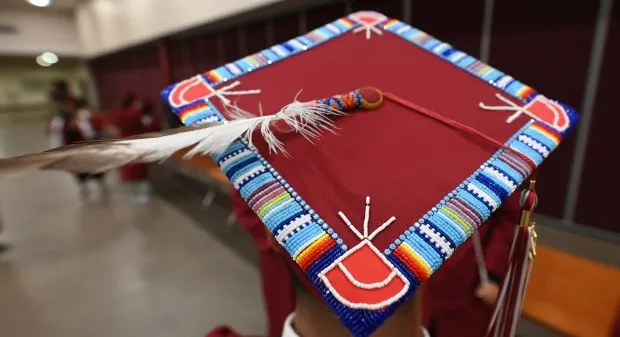
One of the defining features of academic regalia is how it distinguishes between various degrees. Doctoral gowns, for instance, are a sight to behold. While they may come in black, they often burst with a vibrant array of colors.
What truly sets them apart are the three velvet chevrons adorning each sleeve. Master’s and bachelor’s gowns, on the other hand, are typically black, with master’s gowns featuring those elegant square-cut tails on the sleeves.
A Rainbow of Academic Achievement: Hoods
If you’ve ever marveled at the colorful hoods worn during graduation, you’re witnessing a tradition that dates back centuries. Doctoral hoods, slightly longer than their master’s degree counterparts, display the colors of the institution that confers the degree. These hoods represent a spectrum of academic achievement.
Caps of Freedom and Scholarship

Caps are more than just headwear; they hold historical significance. Legend has it that the privilege of wearing a cap was initially granted to a freed Roman slave. This simple cap has since become a powerful symbol of the freedom of scholarship. The academic cap, or mortarboard, stands as a testament to the pursuit of knowledge and the liberation it brings.
Gowns: Democracy of Scholarship
The flowing academic gown transcends the boundaries of rank or social stratum. It’s a democratic garment, symbolizing the equality that prevails in the realm of scholarship. Underneath this robe, all graduates are equal, bound together by their shared pursuit of knowledge.
As you don your cap and gown on graduation day, remember that you’re not just wearing attire; you’re becoming a part of a legacy that stretches back through the centuries. It’s a legacy of learning, enlightenment, and the timeless tradition of academic regalia



